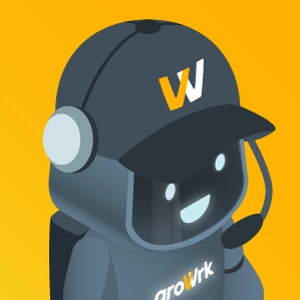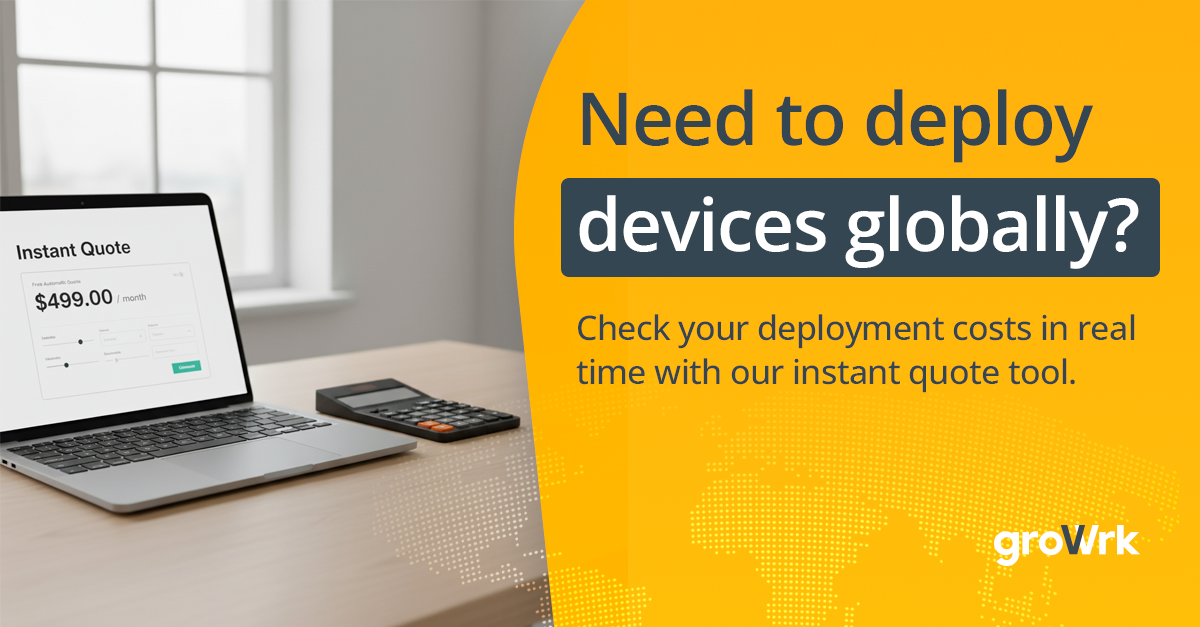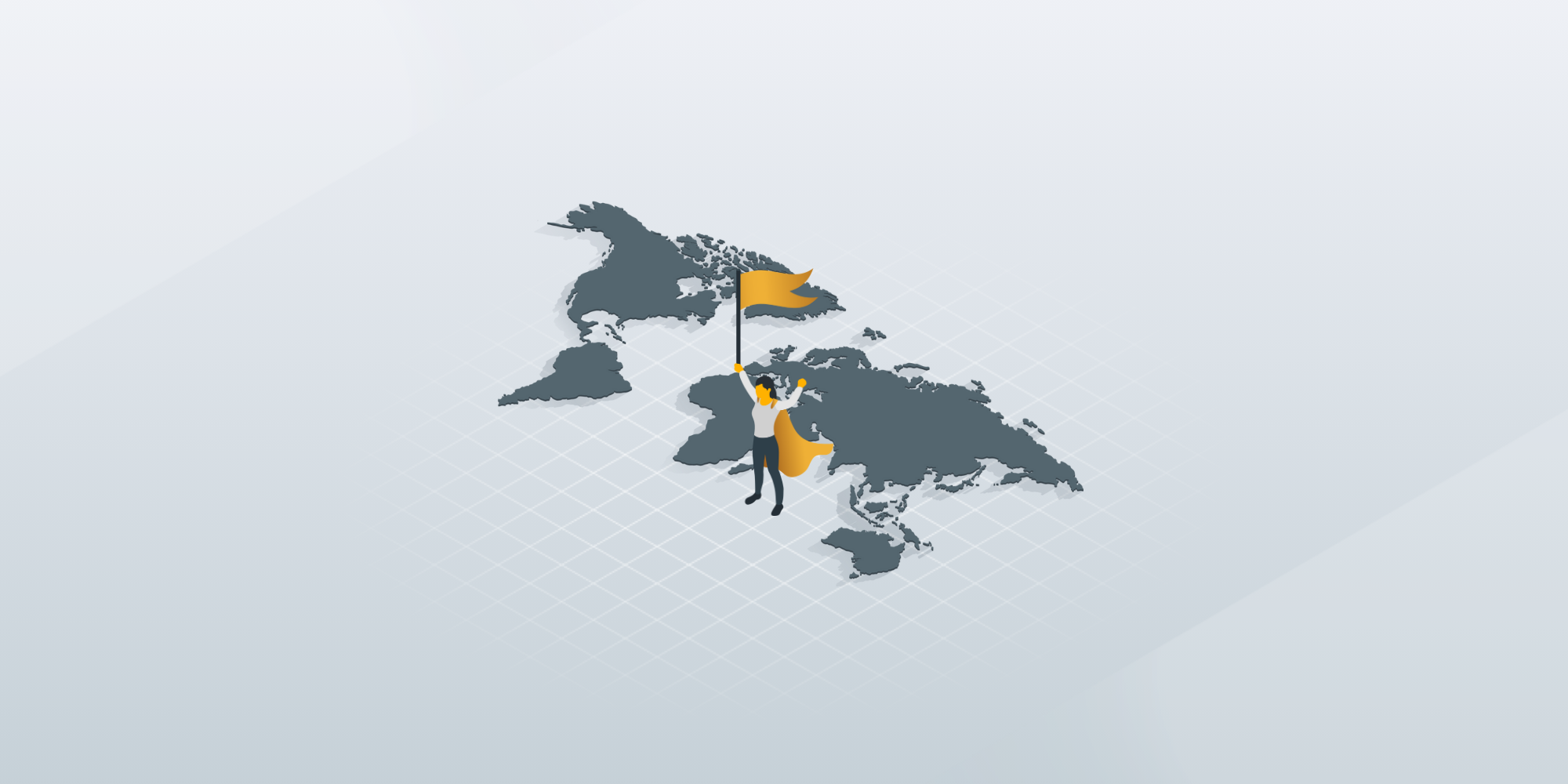Top 9 free procurement software for 2025
 GroWrk Team
GroWrk Team
Looking for a way to simplify procurement without the high costs? Free procurement software can automate manual tasks, reduce errors, and centralize vendor relationships—all without a subscription fee. Whether you're managing budgets, purchase orders, or supplier data, these tools give you the control and visibility to optimize your procurement lifecycle.
In this guide, you'll find top free procurement software options, key features to look for, and best practices for successful implementation.
Key Takeaways
-
Procurement software automates and optimizes purchasing processes, reducing manual tasks and errors and improving supplier relationships and negotiation outcomes.
-
Free procurement software means cost savings, accuracy, and efficiency, so you can simplify the procure-to-pay process and achieve transparency.
-
Key features to consider when choosing free procurement software are supplier management, purchase requisition management, budgeting, and robust reporting and analytics for decision making.
What is procurement software?

Procurement software is a tool that digitizes and streamlines the entire purchasing process. It replaces manual spreadsheets and email threads with structured workflows that help organizations request, approve, order, and track purchases more efficiently. Whether you're managing office supplies or complex vendor contracts, procurement software offers a centralized way to handle it all.
It supports the full procure-to-pay (P2P) lifecycle—from identifying needs and selecting suppliers to receiving goods and processing invoices. Most platforms also offer analytics and audit trails, helping teams improve visibility and control over company spend.
Key functions of procurement software include:
-
Purchase requisition management: Submit, track, and approve internal requests for goods or services.
-
Purchase order generation: Convert approved requests into purchase orders using pre-approved templates.
-
Vendor management: Store supplier details, contracts, and ratings in one place for easy reference and compliance.
-
Budget control: Set spending limits and monitor budget usage in real time.
-
Invoice matching: Automatically match invoices to purchase orders and delivery confirmations to reduce errors.
-
Audit trails and compliance: Track every step of the procurement process to support accountability and regulatory compliance.
With both free and paid procurement tools available, businesses of all sizes can improve accuracy, reduce delays, and increase procurement transparency.
Get an instant quote
Key features to look for in free procurement software
When choosing free procurement software, certain features are essential to ensure a seamless procurement process.
| Feature | Description | Why it matters |
|---|---|---|
| Supplier management | Central repository for vendor details, contracts, and performance data. | Improves onboarding, vendor tracking, and supplier relationships. |
| Purchase requisition & approval workflows | Tools to submit, route, and approve procurement requests. | Adds control, transparency, and accountability to purchasing processes. |
| Purchase Order (PO) management | Automatically generate, track, and manage purchase orders. | Ensures consistency and compliance across the procure-to-pay process. |
| Budget tracking | Set and monitor departmental or project-based budgets in real time. | Prevents overspending and supports financial planning. |
| Invoice matching | Match POs, invoices, and receipts to validate transactions. | Reduces payment errors and supports accurate financial reporting. |
| Reporting & analytics | Generate reports on spend, vendor performance, and process efficiency. | Enables data-driven procurement decisions. |
| Document storage | Centralized storage for quotes, RFQs, contracts, and procurement docs. | Makes it easy to find and manage critical documents securely. |
| User roles & permissions | Define access and responsibilities based on job roles. | Ensures compliance and prevents unauthorized actions in procurement workflows. |
| Integration support | Connect with accounting, ERP, or tools like Google Sheets. | Streamlines operations and minimizes manual data entry. |
Understanding the procurement lifecycle
The procurement lifecycle is the foundation of a well-run purchasing system. It’s a series of connected steps that guide how goods and services are requested, acquired, paid for, and tracked. Managing this cycle effectively helps reduce risk, improve compliance, and support smarter business decisions.
Key stages of the procurement lifecycle:
-
Need identification: A department flags a need for a product or service—often the first trigger in the process.
-
Requisition & approval: A purchase request is submitted and routed for approval based on internal policies and budgets.
-
Supplier selection: Teams evaluate vendors based on cost, delivery time, quality, and compliance.
-
Purchase order creation: Once approved, a formal PO is generated and sent to the supplier for fulfillment.
-
Goods receipt & inspection: Upon delivery, goods or services are verified against the PO to ensure accuracy.
-
Invoice matching & payment: The invoice is matched with the PO and delivery details. If everything aligns, payment is processed.
-
Recordkeeping & reporting: Documentation is stored for auditing and reporting, supporting transparency and future purchasing decisions.
Using procurement software to manage this cycle automates repetitive steps, ensures data consistency, and helps teams track spend and compliance in real time.
Top 9 free procurement software solutions
Free procurement software can streamline purchasing, reduce errors, and centralize vendor management—without the cost of a paid platform. Below are some of the top free tools available, each offering unique features for different business needs.
GroWrk (A La Carte)

A global IT procurement and device management platform that lets you source, ship, and retrieve equipment on demand—without a subscription.
-
Pay-as-you-go model ideal for IT teams managing remote and hybrid workforces
-
Procure and deploy laptops, monitors, and accessories in 150+ countries
-
On-demand retrieval and secure device returns for offboarding
-
Real-time visibility into orders, inventory, and employee assets
-
Built-in compliance, device configuration, and vendor management tools
OpenProcurement

An open-source platform designed to improve accessibility and transparency in public and private procurement.
-
Supports the full procurement cycle: tendering, awarding, contract management
-
Customizable for industry-specific workflows
-
Promotes auditability and regulatory compliance
-
Community-supported with ongoing development
Procuman

A flexible e-procurement platform that bridges procurement and customer relationship management.
-
Purchase requisition, PO, and vendor management in one tool
-
CRM integration for a holistic view of vendor interactions
-
Offers customizable workflows and approval hierarchies
-
Supports spend tracking and reporting
Tradogram

A free cloud-based solution that centralizes spend data and improves procurement visibility.
-
Budget tracking and approval workflows
-
Vendor management with real-time collaboration tools
-
Built-in reporting and analytics
-
Supports purchase requests, orders, and contract management
Snipe‑IT

A self‑hosted, open-source IT asset registry that’s perfect for tracking hardware, software licenses, and vendor relationships for IT teams.
-
Asset inventory with barcode/QR support and custom fields
-
Incidents and license expiration tracking via built-in Helpdesk
-
REST API for automation and integration
-
Secure user roles, two‑factor authentication, and audit logging
GLPi

A web‑based GPL‑licensed IT asset and service desk system designed for managing IT assets, user tickets, contracts, and maintenance actions.
-
Discovers and inventories assets via OCS or FusionInventory
-
Helpdesk ticketing with SLA escalation and reporting
-
Contracts, warranties, and document management
-
Plugins for extended ITIL workflows
OCS Inventory NG

An open-source agent‑based tool that inventories hardware and software across networked devices, with remote deployment and license tracking.
-
Agent and agentless discovery across Windows, Linux, and others
-
Web UI for inventory visualization and search
-
Application deployment based on criteria (IP, OS, etc.)
-
Integrates with GLPi for end‑to‑end ITAM and purchase process
AssetTiger

A web‑based tool that gives IT teams a simple but powerful way to track and audit IT assets—completely free to get started.
-
Cloud dashboard for IT device life‑cycle tracking
-
Audit trails, asset condition history, and user assignment
-
Basic mobile access for handheld inventory checks
-
Trusted among more than 25,000 users globally
xAssets (Free Version)

A cloud‑based ITAM solution offering Active Directory integration and lifecycle management for small IT environments at no cost.
-
Auto‑discovery of endpoints and asset tagging
-
Integration with Active Directory for user assignment
-
Supports up to 100 endpoints and 1,000 assets
-
Includes endpoint lifecycle workflows and audit trails
Benefits of using free procurement software
.png?width=600&height=300&name=free%20procurement%20software%20(1).png)
Free procurement software provides a cost-effective way for businesses—especially small to midsize companies—to digitize and streamline their purchasing process without a large upfront investment. While free solutions may not have the advanced features of paid platforms, they still offer meaningful improvements over manual processes.
Here are the key benefits:
-
Cost savings: Eliminates the need for costly licenses or subscriptions while reducing procurement processing costs by up to 40–75%.
-
Improved accuracy: Reduces manual data entry and human error through digital forms, automated approval workflows, and invoice matching.
-
Workflow automation: Speeds up the procure-to-pay cycle by automating repetitive tasks like purchase requisition routing, PO generation, and vendor communication.
-
Increased visibility and transparency: Centralizes procurement data in one place so teams can track spend, monitor vendor performance, and identify bottlenecks.
-
Better supplier relationships: Provides tools for managing supplier contacts, documents, and order history, which improves communication and consistency.
-
Stronger compliance and auditability: Keeps procurement activity logged and traceable with clear approval trails and timestamped transactions.
-
Enhanced collaboration: Makes it easier for finance, operations, and purchasing teams to work together with shared dashboards and approval queues.
Free procurement software isn’t just about saving money—it’s about improving how your organization manages spending and vendor relationships.
Industry-specific procurement needs
Every industry faces unique procurement challenges based on regulations, operational workflows, and vendor relationships. Choosing the right procurement software means aligning features with those industry-specific requirements.
| Industry | Key procurement requirements | Why it matters |
|---|---|---|
| Manufacturing | - ERP & inventory integration - Real-time material tracking - Supplier lead times | Ensures production continuity, reduces stockouts, and improves cost control |
| Healthcare | - Regulatory compliance (HIPAA, FDA) - Supplier certification tracking - Audit trails | Protects patient safety, ensures legal compliance, and maintains clean procurement records |
| Government / Public | - Tender/bid management - Approval workflows - Transparent reporting | Enables public accountability, prevents fraud, and meets legal and audit requirements |
| Retail & E-commerce | - Vendor portals - PO automation - Inventory system integration | Speeds up procurement cycles, reduces human error, and optimizes supply chain responsiveness |
| Professional services | - Project-based budgeting - Contract and digital goods tracking - Accounting sync | Supports service-driven workflows, improves cost tracking, and streamlines cross-team purchasing |
How to choose the right free procurement software for your business
.png?width=600&height=300&name=free%20procurement%20software%20(2).png)
Choosing the right free procurement tool starts with aligning your organization’s goals, team needs, and procurement complexity. Not every solution will offer the same depth, so it’s critical to assess what matters most based on your internal workflows and vendor landscape.
Here are the key factors to consider:
-
Define your procurement priorities: Identify pain points—manual tracking, budget visibility, approval delays—and determine which features will solve them. Are you optimizing spend, managing vendors, or standardizing purchase requests?
-
Evaluate core and advanced features: Look for essentials like:
-
Supplier and purchase requisition management
-
Budget tracking
-
Invoice matching and reporting tools
-
Approval workflows
-
Integrations with accounting or inventory systems
-
-
Involve cross-functional stakeholders: Get input from finance, operations, and department heads to ensure the tool meets their requirements and encourages adoption across teams.
-
Assess scalability: Even if you’re choosing a free version now, ensure the tool offers upgrade paths or API access for future integration needs.
-
Focus on usability: A clean interface and intuitive navigation will reduce onboarding time and increase usage. Look for systems with self-service dashboards and minimal training requirements.
-
Test with a pilot: Run a short trial with a small team to validate how the system performs in real workflows. Use feedback to make a final decision.
Connecting procurement systems: Integration essentials
Integrating procurement software with your existing systems is essential for eliminating silos, reducing manual entry, and driving real-time visibility across your operations. The right integrations can streamline procurement from requisition to payment—without disrupting your existing tech stack.
Here’s what to consider when connecting procurement systems:
Common Integrations
-
Accounting software (e.g. QuickBooks, Xero): Sync purchase orders, invoices, and payment status.
-
ERP platforms (e.g. NetSuite, SAP): Align procurement with inventory, finance, and operations data.
-
Inventory management tools: Automate stock level updates and replenishment triggers.
-
Project management tools (e.g. Trello, Asana): Link purchases to project timelines and budgets.
-
Document management systems: Centralize contracts, vendor documents, and approvals.
Key Considerations
-
Data compatibility: Ensure field formats (e.g. vendor ID, PO number) match between systems to prevent sync issues.
-
Security: Use encrypted APIs or secure file transfers (e.g. SFTP) to protect sensitive procurement and financial data.
-
Scalability: Choose tools that support future integrations or offer middleware support as your tech stack evolves.
Integration Methods
-
Pre-built integrations: Many free tools offer plug-and-play integrations with popular apps.
-
APIs and webhooks: Enable real-time data syncs and automation for custom use cases.
-
CSV imports/exports: A practical fallback for smaller businesses without complex systems.
When systems are connected, procurement data flows seamlessly across departments—leading to faster approvals, fewer errors, and greater transparency. Integration isn’t just about convenience—it’s a foundation for smarter procurement decisions.
Implementing free procurement software: Best practices
.png?width=600&height=300&name=free%20procurement%20software%20(3).png)
Rolling out procurement software—especially a free solution—requires thoughtful planning to ensure adoption, accuracy, and long-term value. Below are best practices to guide a smooth and effective implementation.
1. Establish clear procurement policies
Before introducing any tool, define standardized procurement workflows:
-
Outline approval hierarchies, requisition procedures, and budget limits.
-
Align policies across departments to minimize confusion or bypassing protocols.
-
Document these processes and make them accessible within your tool.
2. Centralize procurement workflows
Use the software as a hub for all purchasing activity:
-
Route all requisitions and purchase orders through one platform.
-
Sync with accounting or inventory systems to streamline data sharing.
-
Reduce manual handoffs and emails that can lead to delays or errors.
3. Involve stakeholders early
Cross-functional alignment improves buy-in and long-term success:
-
Include finance, IT, operations, and procurement teams in the selection and rollout.
-
Address pain points specific to each department to encourage adoption.
-
Assign clear roles (e.g., requestor, approver, finance reviewer) within the tool.
4. Train and support users
Even user-friendly tools require some onboarding:
-
Offer training sessions or internal guides tailored to user roles.
-
Provide ongoing support for questions or system issues.
-
Highlight benefits like time savings and fewer errors to encourage usage.
5. Leverage AI where possible
Many modern procurement platforms—especially paid options—offer AI features:
-
Automate spend classification and invoice matching.
-
Get insights from procurement data to optimize vendor selection and negotiation.
By following these best practices, organizations can ensure their free procurement software implementation is successful, scalable, and aligned with business goals.
Drawbacks of free procurement software
While free procurement software can be a great starting point, it’s important to understand the limitations that may affect scalability, security, and efficiency as your organization grows.
1. Limited features
-
Many free versions only offer basic procurement functionality.
-
Advanced features like multi-level approval workflows, supplier scorecards, or detailed spend analytics may require a paid upgrade.
-
Lack of built-in compliance and audit support may create gaps in regulated industries.
2. Customization and scalability constraints
-
Free tools often come with rigid templates and limited customization.
-
May not support complex procurement workflows or department-specific configurations.
-
As procurement needs evolve, these tools may not scale or integrate well with ERP or accounting systems.
3. Support and maintenance gaps
-
Free software typically comes with minimal or community-based support.
-
Slow response times and limited documentation can delay issue resolution.
-
Ongoing maintenance, updates, and bug fixes may be deprioritized compared to paid versions.
4. Security and integration risks
-
Some free solutions lack advanced security features like role-based access control or encryption.
-
Limited or no integration with accounting, HR, or inventory platforms can lead to data silos and manual re-entry.
-
Workflow interruptions may arise from usage limits, CAPTCHAs, or ads in freemium models.
5. Hidden costs
-
Some tools restrict access to key features or reporting unless you upgrade.
-
Costly workarounds (manual processes, third-party tools) may be needed to fill functional gaps.
-
Lack of automation increases operational overhead over time.
Scale on your terms with GroWrk A La Carte
Unlike most free tools that limit access or push upgrades, GroWrk A La Carte gives you full use of a global IT procurement platform—with no subscription, no platform fees, and no long-term commitments.
You only pay for the hardware and logistics services you use, making it ideal for scaling your IT operations without overhead.
-
Free-to-use procurement platform
Use GroWrk’s procurement interface to request devices, schedule deliveries, and coordinate retrievals—without paying for access or licenses. -
Global device sourcing and deployment
Order laptops, monitors, and accessories for employees in over 150 countries. Devices are locally sourced, pre-configured, and delivered to the end user—without involving your internal team. -
On-demand retrievals for remote offboarding
Schedule secure pickups when an employee leaves or changes location. GroWrk handles the return, recycling, or repurposing of devices through certified partners. -
Simple service-based billing
You only pay for what you need—whether it’s one laptop for a new hire or a batch deployment across regions. No surprise costs, no locked-in tiers. -
Built-in compliance and global logistics support
GroWrk navigates customs, handles vendor coordination, and ensures your shipments meet local compliance standards—so you don’t have to.
GroWrk A La Carte is the easiest way to scale IT procurement globally—without subscriptions, platform fees, or complexity. Schedule a demo and see how GroWrk can help you scale with accuracy and control.
Frequently asked questions
What is procurement software?
Procurement software is a tool that automates and improves procurement processes to increase operational efficiency. Investing in such software will optimize your purchasing activities.
What are the benefits of using free procurement software?
Using free procurement software reduces costs while enhancing accuracy and transparency, ultimately streamlining the procure-to-pay process for your organization.
What key features should I look for in free procurement software?
To choose free procurement software prioritise features like supplier management, purchase requisition and order management, budgeting and automated invoice matching. These will improve your procurement process and efficiency.
How do I choose the right procurement software for my business?
To choose the right procurement software, start by evaluating your organizational goals and involve key stakeholders in the decision-making process. Ensure the software’s features align with your business needs for optimal efficiency.
What are some best practices for implementing procurement software?
To implement procurement software, establish clear procurement policies, centralize workflows, cross-departmental collaboration, and use AI to increase efficiency. These will streamline processes and improve overall procurement effectiveness.






